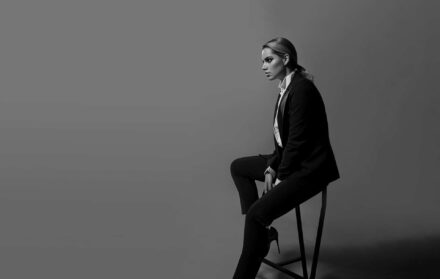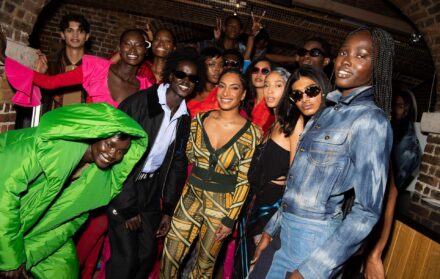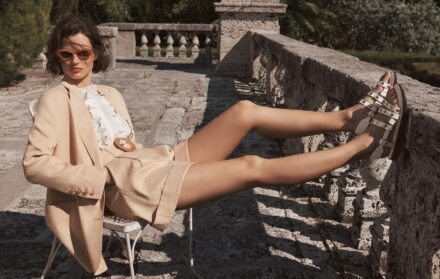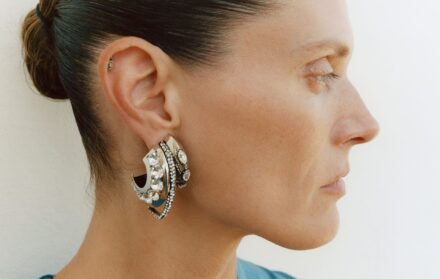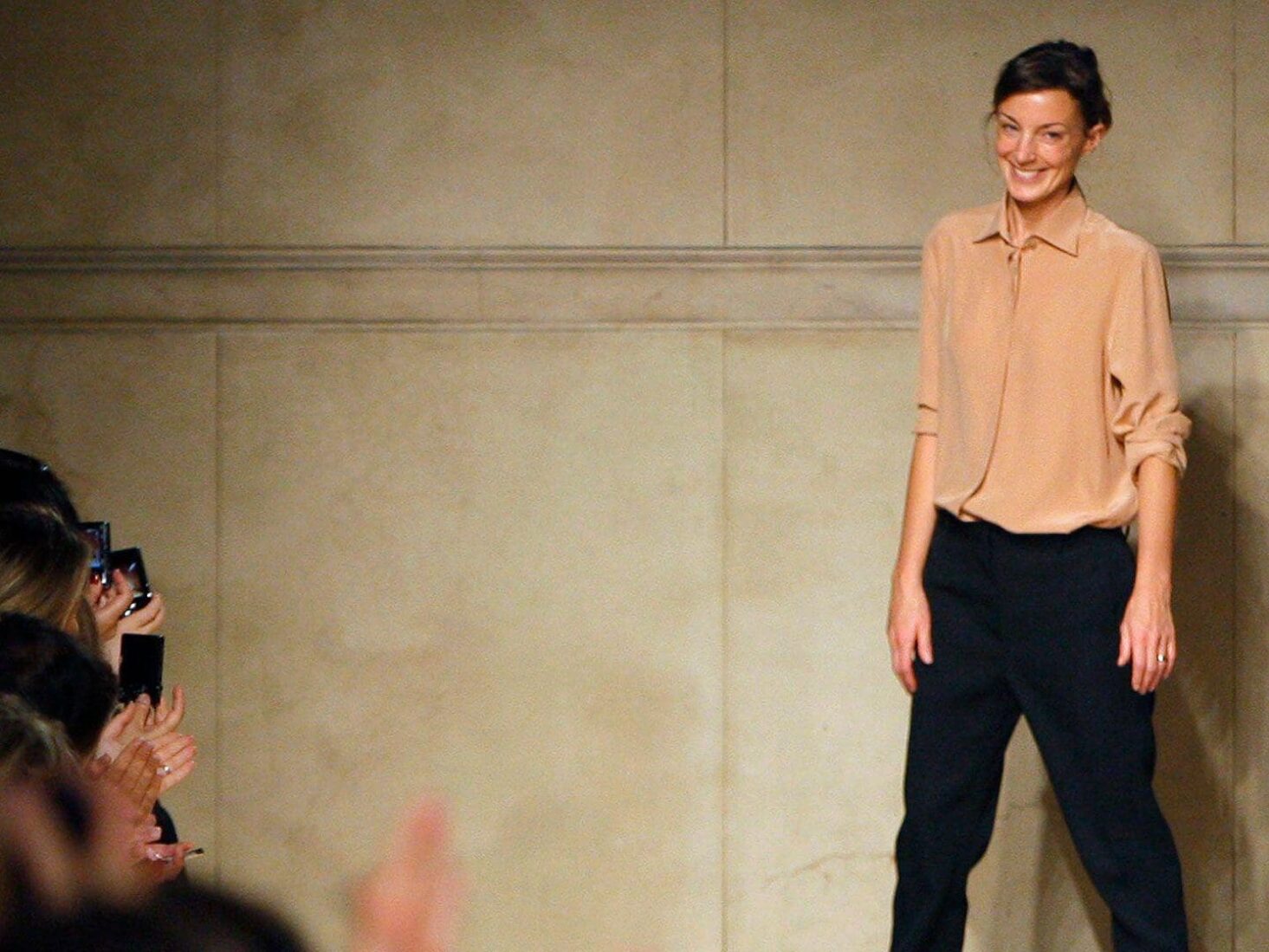
The enduring appeal of Phoebe Philo
As she returns after a three-year hiatus, we explore why the fashion world just can’t get enough of Phoebe Philo
In an age of fashion gimmicks designed for short-lived social media fame and the never-ending rotating door of designers at big houses, it’s now difficult to imagine a singular creative director amassing a lasting army of loyal followers. In fact, aside from the inimitable Miuccia Prada, it’s hard to think of a single designer whose popularity hasn’t waxed and waned during their career. Except, perhaps, for the likely successor to Mrs P’s throne: Phoebe Philo.
Having shot to icon status on the back of her huge talent, uniquely masterful grasp of the zeitgeist and strong sense of personal style, the cult-favourite designer caused massive tremors in the industry when she announced her return to fashion after a three-year hiatus in 2021. Now on the precipice of launching her eponymous LVMH-backed brand next month, the hype around Philo’s designs has reached fever pitch. So what’s fuelling her magnetic appeal among fashion circles? Let’s start at the beginning…
The early career of Phoebe Philo
The Paris-born British designer started her career at revered London fashion school Central Saint Martins where she befriended fellow student Stella McCartney. Philo followed McCartney to Chloé, working under her until 2001 when Philo stepped into the creative director position at the French brand. Now with greater creative freedom, Philo embued Chloé’s signature romantic, whimsical designs with a boho-chic aesthetic, while also creating some of the house’s most enduring accessories, including the Chloé Paddington bag.
But it was in 2008, when she took over at Celine, that Philo truly cemented her status as a world-class designer. Rewriting the codes of minimalist It-girl fashion, Philo’s sophisticated tailoring, exquisite silhouettes, and tasteful accessories infused a clean freshness into the gaudy clutter of Y2K fashion. Over her ten-year tenure, Philo offered women styles they could truly feel empowered in, so much so that when it was announced she would be replaced by the famously skinny-chic favouring Hedi Slimane in 2018, designs from Philo’s ‘Old Celine’ became treasured archival pieces whose resale value soared. So what is it about her understated designs that makes them so covetable?
The Phoebe Philo design formula
“Great designs are the ones that make you look at something and think - why is no one else doing this?” says fashion historian and editor Martin Lerma. This, in essence, is exactly what Philo mastered: perfectly cut trousers, flattering shirts, chunky knits, and structured coats all impeccably tailored with subtle details like exaggerated silhouettes, the occasional asymmetric hem, and subtle splashes of colour.
There’s also the fact that Philo was able to cut through the noise of Noughties houses catering to the male gaze with their ubiquitous slinky bodycon dresses and skinny jeans. “I think that fashion is flooded with male designers and we finally had somebody who understood women not just aesthetically but also comfort-wise,” says fashion commentator and creator of the @ideservecouture Instagram account, Hanan Besovic.
All of this has resulted in Philo having a lasting influence on the fashion zeitgeist in absentia. The current era of modern minimalism borrows greatly from Philo’s precedent. “Phoebe Philo’s influence on present-day fashion is undeniable,” says Marta Indeka, senior foresight analyst at strategic foresight consultancy, The Future Laboratory. “The effortless, elevated casual elegance that is her signature has become a staple to the extent that it is easy to forget how trailblazing Philo’s work at Chloé and Céline was.”
Philo’s style existed outside the transcendental nature of trends and paved the way for minimalist brands and designers like The Row, Totême, Peter Do, Rok Hwang, and Daniel Lee, the latter three of which are Philo protégés. “She made a lane for herself that a lot of people are now following,” says Besovic. “But it’s funny because a lot of them are again, men. We don’t have a new woman designer who’s the new Phoebe Philo.” Lerma echoes the sentiment, explaining, “I think Phoebe is probably one of the only designers today whose work really moves the needle for the industry as a whole.” It is, perhaps, unsurprising then that the only person who could really fill the Philo-shaped hole in the fashion industry is Philo herself.
Then, of course, there is the fact that in a world where every designer is an open book on social media, Philo is famously unavailable. “The idea of someone that private with enormous success leaving with no outwardly known plans to return built a lot of intrigue,” says Lerma.
What can we expect from Phoebe Philo's new brand?
In its previous incarnations, Phoebe Philo’s aesthetic was celebrated for being polished and aspirational but also approachable. With quiet luxury trending for AW23, her exquisitely tailored garments are sure to please old fans and gather new ones - if, of course, that is the direction she takes with her eponymous brand.
While it will be interesting to see how much Philo’s approach has evolved over the last three years, and how far she wishes to separate herself from Old Celine, certain winning formulas may well carry over. “I think that accessories are going to be a strong push, particularly leather goods, especially because it’s LVMH-backed. Those were such strong performers for her at Celine,” says Lerma
Then, of course, there is the fact that Philo will have to contend with changed consumer sentiment and the fact that Gen Z demands more accountability from the brands it champions. The Celine aesthetic was a very Eurocentric one in a lot of ways. At a time when commitments to diversity, inclusion and sustainability can be almost as important as the products themselves, how well will the Phoebe Philo aesthetic fit in? “Philo’s style lends very well to gender fluidity – her loose silhouettes are flattering on many body types, making them inherently inclusive,” says Indeka.
The other key difference with this venture is that Philo is not joining an established brand and so faces the mammoth task of breaking into a saturated market, in addition to the pressure of living up to the hype. “The market is very crowded and I have no doubt that she's very aware of that,” says Lerma. “But I don't think we should underestimate her ability. This is a person who has really changed the course of the industry more than once and that is no small task. There are very few people who have the kind of pull and rapt audience that she does.”
This hold Philo has on her audience will undoubtedly help catapult her brand to success. “Philo’s fanbase is a very savvy and educated one,” says Indeka. “Philophiles were one of the first (fashion) connoisseur communities – avid archivists knew about every product drop, every limited edition, and discussed every new collection at length on social media. The outrage when Céline became Celine (marking the end of the Philo era at the brand) or the sheer excitement at the announcement of the launch of her eponymous label are just two of the many signs suggesting that not only is Philo still relevant, but that the gap she left when exiting Céline is still felt years later.”
Whatever she introduces us to next, her legacy so far has taught us that if anyone can reimagine the course of fashion amidst the clutter of fleeting trends, it’s Phoebe Philo. And that is definitely something to look forward to.
Read more: Is body diversity in fashion a lost cause?

